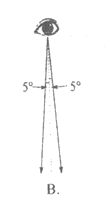题目内容
【题目】The post office is far here. ______ you can't go there _______ foot
A. because; on B. so; by C. so; on
【答案】C
【解析】
试题分析:句意:邮局离这里很远,所以你不能步行去那里。because因为;so所以,因此;by 乘坐交通工具;on在……上面;关于。根据句意可知,第一个空表示结果,应该用连词so;第二个空是固定短语on foot,意思是步行。故选C。

练习册系列答案
 期末1卷素质教育评估卷系列答案
期末1卷素质教育评估卷系列答案
相关题目



